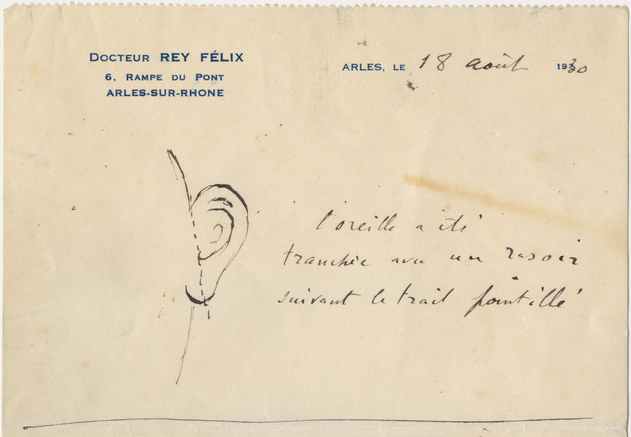Get out your heavy winter coats because this year's best meteor shower peaks tonight.
The Film noir ArchivesGeminid meteor shower is expected to be an incredible show for the folks who can see it in the Northern and Southern Hemispheres.
NASA is predicting the meteor rates could be as high as 60 per hour in dark areas with little light pollution to blot out even the faintest shooting stars.
SEE ALSO: Your guide to the potentially awesome Perseid meteor shower this week"With August's Perseids obscured by bright moonlight, the Geminids will be the best shower this year," NASA meteor expert Bill Cooke said in a statement. "The thin, waning crescent moon won't spoil the show."
The Geminids should reach their peak in the overnight hours between Wednesday and Thursday, with the absolute best rates expected at 4 a.m. ET Thursday, when the radiant point — the Gemini constellation — is highest in the sky, Cooke added.
If you want a dazzling view of the shower, get as far away from city lights as possible. Find a field or somewhere with an open view of a cloud-free sky where you can lie down and look up for hours on end.
You don't need any special equipment to see the shower, but you do need a fair bit of patience.
Allow your eyes about 30 minutes to adjust to the darkness and then just keep your eyes peeled for any meteors streaking through the skies.
Be sure to check the weather before you head out and bring layers and even something warm to drink if it's going to be chilly.
While people in rural areas will get the best look at the meteor shower, you still have a shot of seeing at least a few bright meteors from a light-polluted area.
If you do want to try to see the Geminids from a city, get into a park or even try to use buildings to block our artificial light that could ruin your night vision, Cooke said in 2015. Basically, just try to get somewhere with a clear view of the sky and as little bright light as possible.
Via GiphyIf you are in the the heart of a city, don't expect to see more than a few meteors tonight, but if you're lucky, some bright shooting stars should break through and give you a show.
The Geminids peak every year around this time as the Earth passes through material left behind by an object named 3200 Phaethon.
"Phaethon's nature is debated," Cooke added. "It's either a near-Earth asteroid or an extinct comet, sometimes called a rock comet."
If your skies aren't clear or you're not able to head outside for the shower, check out NASA's meteor webcam tonight live starting at sunset.
(Editor: {typename type="name"/})
 Unconventional, Part 1: Ed Sanders and the Liberal Puritan
Unconventional, Part 1: Ed Sanders and the Liberal Puritan
 How Much of Van Gogh’s Ear Did He Cut Off?
How Much of Van Gogh’s Ear Did He Cut Off?
 Prints by Peter Howson
Prints by Peter Howson
 Stablecoin bill advances in U.S. Senate as Trump critics call to end his crypto dealings
Stablecoin bill advances in U.S. Senate as Trump critics call to end his crypto dealings
NYT Connections Sports Edition hints and answers for May 19: Tips to solve Connections #238
 Connections: Sports Editionis a new version of the popular New York Times word game that seeks to te
...[Details]
Connections: Sports Editionis a new version of the popular New York Times word game that seeks to te
...[Details]
Best Echo deal: Certified refurbished 4th gen Echo on sale for $49.99 at Amazon
 SAVE $50: As of October 19, a certified refurbished 4th gen Echo is on sale for $49.99 at Amazon.Tha
...[Details]
SAVE $50: As of October 19, a certified refurbished 4th gen Echo is on sale for $49.99 at Amazon.Tha
...[Details]
Why I Got Really, Really Into Garth Brooks As a Kid
 Mr. BrooksBy Drew BratcherJuly 8, 2016First PersonFrom the cover of In Pieces.I saw Garth—that’s wha
...[Details]
Mr. BrooksBy Drew BratcherJuly 8, 2016First PersonFrom the cover of In Pieces.I saw Garth—that’s wha
...[Details]
23andMe data breach: A hacker leaks more user records
 There's more info coming out about the 23andMe hack and it's not good.This week, a hacker with the m
...[Details]
There's more info coming out about the 23andMe hack and it's not good.This week, a hacker with the m
...[Details]
Meta continues its submission to Trump with new advisor on its board
 In a move unsurprising to those following Meta CEO Mark Zuckerberg's political affiliations, the tec
...[Details]
In a move unsurprising to those following Meta CEO Mark Zuckerberg's political affiliations, the tec
...[Details]
You can now block Instagram from tracking your web activity
 If you're on Instagram, you may want to check out a new feature called Activity Off-Meta Technologie
...[Details]
If you're on Instagram, you may want to check out a new feature called Activity Off-Meta Technologie
...[Details]
Prison Lit: Jones Very’s Words from the Asylum
 Troubler of the HouseBy Max NelsonJuly 21, 2016Prison LitMcLean Asylum for the Insane.On September 1
...[Details]
Troubler of the HouseBy Max NelsonJuly 21, 2016Prison LitMcLean Asylum for the Insane.On September 1
...[Details]
'Heardle' today: Correct answer and song hints for August 11
 We're almost through this week. It's Thursday. Everything is going fine, but the answer to today's H
...[Details]
We're almost through this week. It's Thursday. Everything is going fine, but the answer to today's H
...[Details]
U.N. aims to make carbon emissions cost money at COP 25 climate talks
 At around 3 a.m. on Dec. 12, 2015 — essentially the very last minute — U.N. negotiators
...[Details]
At around 3 a.m. on Dec. 12, 2015 — essentially the very last minute — U.N. negotiators
...[Details]
Hed: 'Loki' Season 2 explainer: H.H. Holmes and The Chicago World's Fair
 Who'd have thought America's first serial killer would become part of MCU canon? Incredibly, in its
...[Details]
Who'd have thought America's first serial killer would become part of MCU canon? Incredibly, in its
...[Details]
Sabalenka vs. Svitolina 2025 livestream: Watch Madrid Open for free

Looking for Artistic Success? This Allegorical Map Will Help

接受PR>=1、BR>=1,流量相当,内容相关类链接。